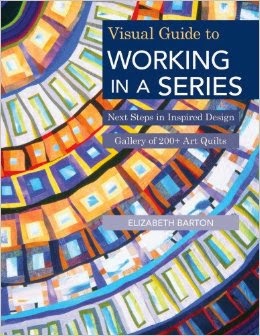 |
| No, not a quilt ...just my favorite color! Scotland, Bonnie Scotland..... |
I also thought - what a drag it would be having to write out all the lessons!!! And I'd never get the fun of travel...
Time:Mine
..but the more I do teach online, the more I feel it's a superior method. Yes it's true there isn't the socializing!! but there also isn't the increasing hassle of travel. And travel is also Very time consuming...it would take me at least a day - usually 2 or - 3 to get everything packed, and even the shortest flight meant leaving home 4 or 5 hours ahead of time, so just hopping to the next state was really an all-day affair. another day lost. Same thing coming back, and then 2-3 days getting unpacked...so then I was losing up to a week without adding on any actual teaching days.
Time: Students
Many students, too, have long and arduous journeys schlepping all those supplies, and many need to take time off work too ...that time would be better spent in their studio or sewing space, or just in a thinking place! (like the above!).
Lessons:
When I started writing the lessons, I realized that, writing over several weeks as I usually do, I had many many more ideas for creating exercises, designs, explaining composition and creativity and so on, than ever I did when just talking in the class room - even with copious notes - yes, sometimes too copious! I remember one venue got very fed up with me from holding students up from "vendor shopping time" - agh! big biz!! And I enjoy writing the lessons, doing the research, mulling over possibilities.
Student Development
...and then it struck me that (as an online course takes weeks not days) the students also have a lot more time to really think about things, to do some research - usually online of course, for after all..that's where they are. If you go to a symposium for fun, that's fine, and it's great! especially if it's somewhere really neat and you meet some great new friends. No better place! BUT what if you're going to learn something? And it's a very large classroom and the teacher hardly ever gets round to you (that's happened to me several times when I've gone to painting workshops - and, initially, quilting workshops too.) What can I personally learn from a Big Name if I'm one of 40 or 50 crammed into a classroom or hotel conference room for 3-4 days?
Personal Critiques
With the online classes I'm able to help each student personally, and other students can "listen" in and learn by kibitzing (often not possible in a large seminar work room). I also have the time to think about any questions posed to me - in the classroom you pretty much have to answer straight away and (you never know!) your second or third thoughts on the matter could be better...you've got time and opportunity to think about those when you're online.
Cost
...for the teacher - yes I must admit - you can make a lot more money in person, there's no doubt!
but for the student - online classes are just a fraction of the cost of one of the big symposiums, and considerably less even than a guild-sponsored workshop. That means that many more different kinds of people can take the workshops, greater range of ages and backgrounds...and incredibly wider geographical range.
Personal Contact is possible!
It wasn't long after I began teaching online that I realized just how GOOD it is!! And how much we can get to know each other, I love especially people who have taken several classes from me and I get a real sense of who they are and where they are going.
So, if you've never taken an online class, check me out at academyofquilting.com - as well as me there are Lots of other teachers....and just see for yourself how much more satisfying a class is that has longer period of study, with less hassle, and more teacher contact.
Now I will admit that not all online classes are equal...there are some out there that treat neither the students nor the teachers very well....in my experience you'll get the most for your money and time with a class that is more a small personal business rather than being part of a large scale commercial enterprise. The more advertising, hype, marketing, slick websites etc etc there is...remember...it's you who's paying for that!!! My next timed (weekly lessons) class begins on Friday March 2nd, and there are several "on demand" classes you can take as well.
I'd love to hear what you think the pros and cons of live vs online classes are..comments!!!
from both the students' and the teachers' points of view.
And, if you have been, thanks for reading! Elizabeth
















